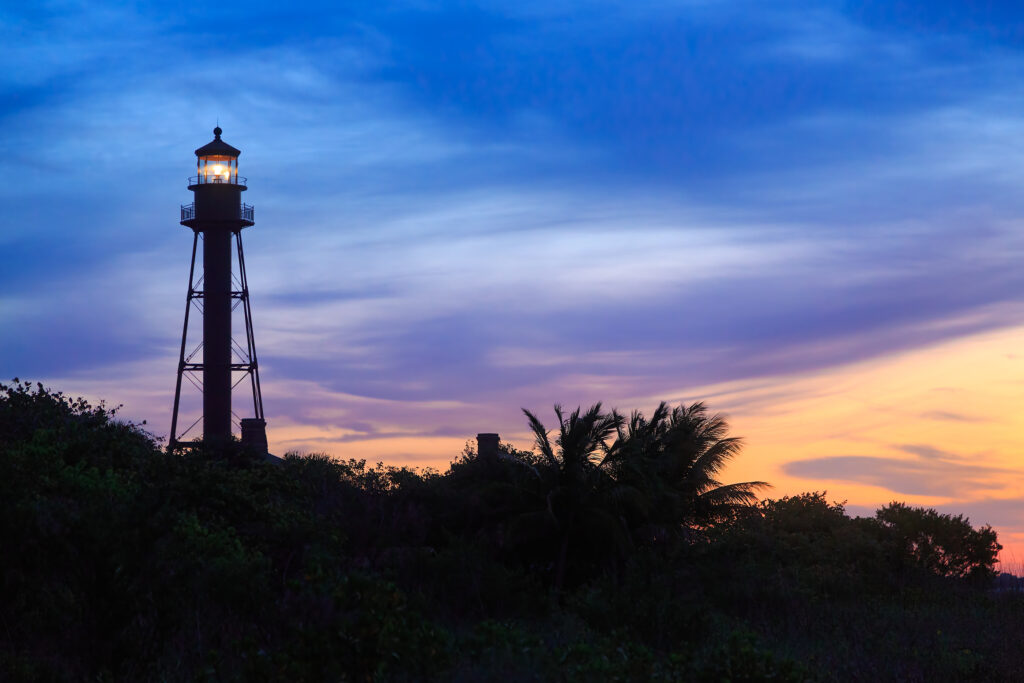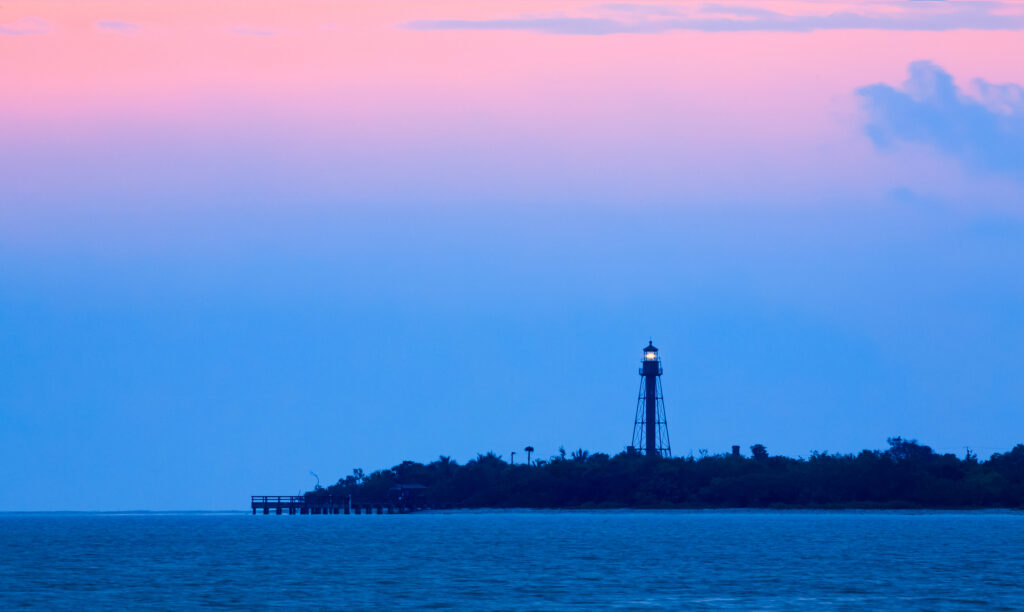
In 1884, a decision was set into motion that would shape the small isle of Sanibel off Florida’s gulf coast for years to come. The U.S. Government deemed it necessary for the safety of passing ships to have a lighthouse reservation on Sanibel Island. It was a necessity wrought by time, the ocean’s whim, and the march of progress.
Years passed, the world around it changing, but come August 20, 1884, the Sanibel Lighthouse stood firm, its towering frame a silhouette against the vibrant Floridian sky. That evening was one imbued with anticipation. The islanders, a hardy bunch used to the temperamental moods of the sea, gathered around as the lighthouse’s lamp was to be lit for the very first time.
Ezekiel Bayley, the lighthouse keeper, was a man of silent strength, with hands calloused from years at sea. He had been chosen for this honored task, and his heart thumped a nervous rhythm as he took the burning taper in hand. He ascended the spiraling staircase, the steps worn by the hasty footsteps of his final inspections. At the tower’s crown, he carefully lit the wick, and in an instant, the great Fresnel lens magnified a beacon that pierced the encroaching night.
The crowd below erupted in cheers, as bright and fervent as the light above. Men tipped their hats and children danced in circles, their laughter frolicking with the seabirds’ calls. Women clutched at their shawls, eyes shining in the new light, as if they witnessed the first sunrise.
The Sanibel Lighthouse not only promised safe passage for mariners but became a symbol of the tenacity of those who called the island home. In following years, countless ships would whisper silent thanks to its constant vigil, a silent guardian warding them from the treacherous shoals.
Generations took the keeper’s mantle, each leaving their mark both in the keeper’s log and on the community’s heart. Stories flourished, some edged with the salt of the sea, others soft as the sands that cradled the island’s shore.
The 20th century saw the world from wars to wonders, but the Sanibel Lighthouse remained steadfast through it all. It beheld the faces of time, standing unchanged as history’s tides ebbed and flowed around it. Hurricanes came and went, lashing at the island with petulant strength, yet the lighthouse stood, a testament to resilience.
Now, the Sanibel Lighthouse persists, its beacon still alive with the warm glow that sliced through the night over a hundred years ago. Modern-day visitors stroll along the beach’s edge, gazing up at the towering guardian, its light a comforting whisper of yesteryears blended with the promise of tomorrow.It is a historic monument, yes, but also a friend to seafarers and an emblem to the islanders, whose lives entwine with its beams—each sunset, each storm, each quiet starry night sealed within its walls, the story of Sanibel Island, and its lighthouse, a continuously unfolding legend, with the dawn of each day’s light.

